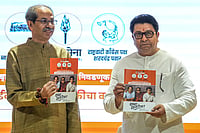In 2014, Prime Minister Narendra Modi’s promise of creating 100 new cities caught the national imagination. Featured prominently in the BJP poll manifesto, it was a dazzling vision. In rally after rally, Modi proclaimed that the new, ‘smart’ cities would create employment and provide world-class facilities: 24x7 water and power, a robust public transport, housing for all, safety and security (if anyone screamed, sensors would alert a command station), short walks to workplaces, smart solutions to waste management and energy efficiency. Growing urbanisation need not be a challenge, we must see it as an opportunity, the ebullient leader said.
Two years on, a watered down version of that idealisation is raising more questions than providing answers. For neither are greenfield (or new) cities coming up, nor even are satellite cities. Instead, minuscule parts of existing cities—often, exclusive pockets—have been identifed for development by special purpose vehicles (SPVs). For instance, just four sq km out of Bhubaneswar’s 135 sq km are to be ‘smartified’. Fears are that such development doesn’t match Modi’s grand talk of including the urban poor. And the SPVs are essentially companies (in which the local body has a shareholding), triggering apprehensions about governance and extraneous authority.
In June 2015, while launching the Smart City Mission, Modi had referred to the fact that 40 per cent of Indians already lived in cities. Referring to the poor living in urban slums, he’d said, “How can they get a better quality of life? We cannot leave our poor to their fate.” Later, addressing the Indian Science Congress, the prime minister had said the mission was aimed at creating “networked cities” that would be “more efficient, safer, and better in delivery of services”—the unspoken implication, it might be taken, was that the poor, who usually get left out, would be actively included in the delivery of essential services. What’s happening in the implementation so far is that there’s not much sign of that. In fact, it seems to be going the other way.
“Smart cities will create exclusive ‘cities within cities’, which is against the very spirit of the panchayati raj and go against the 73rd and 74th amendments (related to panchayats and urban local bodies),” says Poornima Narayan, a councillor in Kochi. In Bhopal, women protested against the smart city plan, fearing that it was a real estate scam involving the demolition of 4,000 government houses in excellent upkeep, felling of over 40,000 trees, dislocation of 6,000 families and auctioning of 300 acres to builders. They had reasons to think so: under an earlier ‘re-densification’ plan, Gammon India had been allotted government land at throwaway prices; it demolished government quarters to raise high-rises with 2BHK apartments selling at Rs 1.4 crore. The Indore City Trade Union Council dubbed such ‘utopian plans’ disastrous for the poor—municipal bodies would raise taxes and borrow to fulfil obligations. The urban development ministry’s suggestion on those lines pointed up these worries.

Elected local representatives are worried about erosion of authority. “We want the powers to govern smart cities,” says Kochi mayor Soumini Jain. “Under the present guidelines, the powers of a constitutionally elected body, acquired through a democratic process, will have to be delegated to the SPV. We have problems with that.” Officials in the urban development ministry counter that the PM favours a people-centric approach and that people are overwhelmingly in favour of the smart city project. But dodgy claims have been made: the Bhopal Municipal Corporation, for INStance, claimed that 1.72 lakh people endorsed the project—based on leading questions like ‘Do you want round-the-clock water supply and free WiFi?’ to which they’d obviously answer yes. “It was a big fraud,” says RTI activist Ajay Dubey. “Municipal employees often recorded opinions in the name of residents.” Even when surveys were professionally done, as in Delhi by the KPMG consultancy, people’s views were not reflected in final plans: the survey found that in NDMC-developed Lutyens’ Delhi, the poor struggled with three toilets to 3,000 people and had to contend with ration mafias. But the project did not address this.
The other aspect is prioritisation. At the macro level, as an irate reader wrote to a newspaper, all 20 cities on the smart city first list were already better off than the rest. The total population amounted to 39 million, and only some 10 per cent would benefit from retrofitting initiatives: where is the need, critics ask, to spend a lot on so few? And there’s glaring lopsidedness at the city level, of which Delhi offers an apt example: the areas around India Gate, Connaught Place, the diplomatic enclave of Chanakyapuri, Lodhi Road and the Ridge, which have wide, tree-lined avenues, large parks, pleasing architecture and bins everywhere are to be smartified with “app- integrated cycle tracks, sensor-based car parking, geo-tagged bins” and so on. All this for some 550 acres, home to less than three per cent of Delhi’s burgeoning population of 18 million, estimated to double by 2030.
A bureaucrat in the ministry expands on how electronics would help, painting an alluring picture: sensors would identify leaks in pipes, allowing quicker intervention to save water; electronic ticker displays would let waiting passengers know when the next bus is arriving; a sensor linked to a central system would count vehicles at crossroads and traffic signals and allow better routing of vehicles to avoid jams. The list could go on. A lot of technology is involved, as if it is the end-all, prompting one critic to say, “The only aim of the project seems to be to allow foreign companies to dump expensive technology on us.”

Fear Factor Shivaji Nagar in Bhopal, where people fear eviction (Photograph by Vivek Pateria)
The wisdom of profligate spending of public funds on elite sections is indeed questionable. Infrastructure improvement in well-developed neighbourhoods will push up property prices, rents, commercial rates. The beneficiaries will be those who own property there. Besides, say municipal officials from other municipal corporations of Delhi, whatever NDMC is being given under the smart city project, it already has plans for—water supply, sewers, roads, parks and WiFi. Asked about priorities for fund allocation, Neeraj Bharti, a director-level official at NDMC who is dealing with the project, says, “Can’t delineate...there’ll be an overall goodness factor.”
Another fear, parallel to those expressed by the Kochi mayor, is that the project not only opens the door to corporatisation of municipal work, it also allows the Centre a degree of control over city governance via the SPVs, the CEOs of which can’t be removed without the Centre’s permission. There’s no clarity on the role of elected municipal bodies either. Will they cede control over designated areas? What role will they have in pan-city solutions, which are not restricted to a designated area?
Amit Bhatt, strategy head (urban transport) at EMBARQ, a worldwide sustainable cities initiative, points out that urban development is a state subject, so friction between SPVs and municipal bodies can’t be ruled out, though some flexibility in selection of CEOs might address the issue.
There’s also an element of pushing things through. In Kerala, neither the assembly nor the Kochi Municipal Corporation have adopted resolutions authorising the funding of the SPVs. But in annexures submitted to the Union ministry, the municipality seems to have approved it. Can administrators do this without the council’s clearance? Says consultant urban planner Ajith Vyas, “The Centre clearly doesn’t trust the municipal corporation to use funds properly. Else, why create SPVs?” On top of that, the Kochi corporation is expected to raise Rs 500 crore in equity for the SPV when its annual revenue itself is around that amount!
The biggest fears, however, are that smart cities, part of Modivision—right-of-centre economics and corporate-style governance with an attendant blindness to weaker sections—will be ruthless with the urban poor. And if the kind of projects the PM pushed when he was CM of Gujarat are any indication, there is no doubt what he aspires to is something like the grand Gujarat International Finance-Tec City (GIFT City). It’s a dream project of the PM, on the outskirts of Ahmedabad. Plans are for several edifices of concrete-and-glass reaching skyward in dizzying profusion, with both offices and housing complexes. Much of what is talked about in the smart city mission was also planned for GIFT. Clearly, it’s an exclusivist island, not a place people earning a few thousands per month are going to be comfortable even entering. It seems little bits of that vision are being distributed across the country through the smart city mission.

Unique Stamp Kochi’s Jewish quarter, in the old fort area (Photograph by Sivaram V.)
Even Bharti concedes that poorer sections may not benefit much, though he asserts they’ll be able to draw on pan-city projects like ‘smart health’ and ‘smart education’. What troubles the poor most, however, is the fear of being lifted out—by means of ‘keep them out of sight’ policies.
The redevelopment of specific areas—the Rajwada area in Indore, for example—hints at “unlocking the full value of land”, a euphemism perhaps for evicting people. While municipal officials are clueless what is to be done to the ASI-protected Holkar-era monument, they speculate that the neighbourhood could see vertical development. The plan itself says it will impact 1.2 lakh people, 24 per cent of whom live in slums. There are similar apprehensions in Bhopal about demolishing buildings in Shivaji Nagar and Tilak Nagar to make way for townships that will be out of reach of the evictees. Says Pooja, a resident of Durga Nagar, a slum cluster, “I have two children studying in schools nearby. The hospital and markets are also near. If they shift us, our children’s studies will be affected.”
Dissenting voices also speak of ignoring specific, local factors, smothering them under a master plan from on high, which is bound to happen when urban local bodies are sidelined. Bhopal-based architect Ajay Kataria says, “Every city has a unique footprint. That is not being taken into consideration.” Take the Fort Kochi area, for example, the pride of the city and a heritage area that is centuries old and presents an intermingling of several cultures. Fort Kochi, along with the slum areas of Mattanchery, colleges and courthouse buildings, and public spaces such as Subhash Park and Children’s Park, have been designated as areas to be retrofitted. Any such intervention is bound to bring about visible change that may subtract from the character and essence of the place.
In Indore, Jetu Patwari, an MLA, points out that the city is one of Madhya Pradesh’s most polluted; commuting is a nightmare, waste management a shambles. Patwari wonders if the money might not be better spent on changing these things rather than making a few areas ‘smart’. “There are lakhs of people living in areas where ambulances or fire tenders cannot reach in an emergency and we are diverting resources for smart solutions?” asks an activist.
Of course, there are those who welcome the project, like IT executive Mukesh Sahu, who says, “You’ve to pay a price for everything. Didn’t dams and steel plants displace people? Why then this opposition to smart cities? Is it because the middle class may be asked to move out, not poor villagers?” Class, of course, is an index of what someone will favour, for in contrast, Ram Lal, a parking attendant in Lutyens’ Delhi, seems to have no clue about the ‘smartness’ that’s soon to be imposed at his workplace. He’s not alone. As a bureaucrat in the urban development ministry put it, “Smart cities will have smart dustbins, smart street lights, smart bus stops...and if I were smart enough to explain it all, I would.”
***
What Rs 100 cr Can Pay For
- 300 Passenger buses Rs 33 lakh each
- 2,000 ambulances Rs 5 lakh each
- 1,00,000 solar street lights Rs 10,000 each
- 1,20,000 90W LED street lights Rs 8,000 each
- 1,000 mechanised German garbage bins with three compartments that can hold about 700 kilos of waste Rs 33 lakh each
- 200 bus staacnds with AC waiting rooms to hold 100 people, two counters and bays for six buses Rs 50 lakh each
- 10,000 public toilets Rs 1 lakh each
- 1,000 musical fountains Rs 10 lakh each
By Anoo Bhuyan with inputs from Minu Ittyipe, K.S. Shaini, Madhavi Tata and Ajay Sukumaran


























